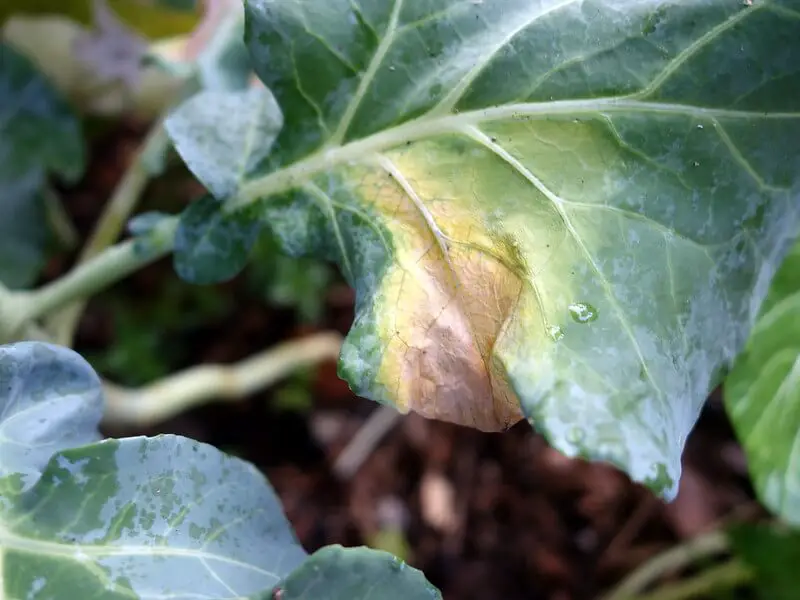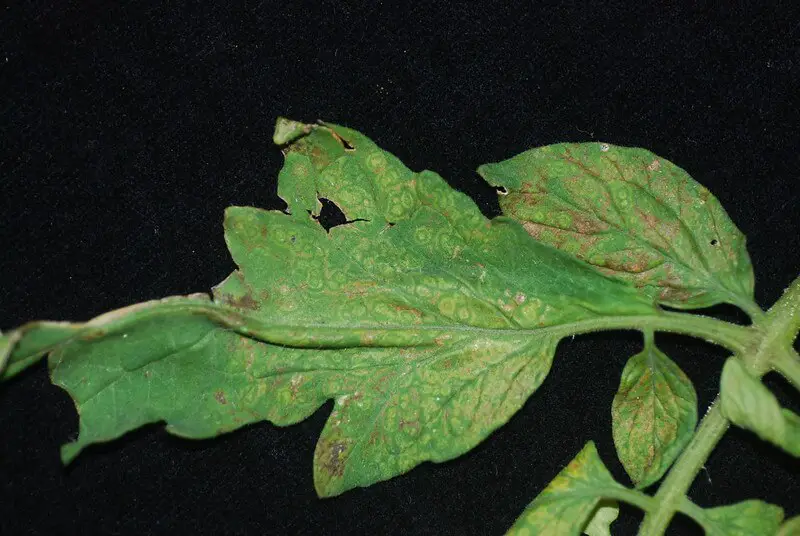Estimated reading time: 8 minutes
Even the most healthy plants will sometimes succumb to disease, but if you know what to watch out for and how to treat it, you’ll often be able to catch it early and nip it in the bud.
Here are some of the most common types of plant diseases you’ll come across growing both perennials and annuals, with some examples of specific diseases you’ll want to look out for.
Want to save this post for later? Click Here to Pin It On Pinterest!
Fungus Diseases
Many fungi are actually useful to plants, forming symbiotic relationships with them and breaking down organic matter into bioavailable nutrients. However, there are also many that are not beneficial to plants, with species that may infect all parts of a plant, from the root to the shoots. Pathogenic fungi harm plants through toxins they produce, while others directly feed on plant tissues.
Pathogenic fungi usually spread in cool, wet conditions, and can take hold with lack of air flow around plants, or even due to the presence of insect hosts (e.g. fungal gnats). Management practices include fungicides and cultural management (usually increasing air flow around plants, especially trees).
Treatment includes fungicidal sulfur, diluted hydrogen peroxide (1-3%), and some people report success with aerated compost tea foliar sprays. A homemade fungicide spray can also be made from 4 tbsp. of baking soda, 1 tsp. of gentle soap and 1 gallon of water.
Do not get this on the soil, and use it sparingly. Sprays must be applied at the first signs of disease and reapplied on a 7-10 day cycle, and after rains.
1. Rust

This disease gets its name from the orange-brown spots or bumps it produces, usually on the underside of leaves, which burst forth to coat the foliage with reddish dust, shutting down leaf functions (transpiration and photosynthesis), and turning the leaves yellow before they eventually die and fall off.
Many plant species are affected, including vegetables like spinach and beets. There are also types of rust, such as “cedar-apple rust,” that affect apples and appear as small yellow-orange spots on the leaves.
To prevent rust, do not get irrigation water on plant leaves, and ensure the soil is kept moist with mulch and high organic matter levels (incorporate compost). This will reduce above ground watering needs which will help reduce above ground fungus.
2. Powdery Mildew

There are different forms of this disease that infect many plant types, including vegetables, flowers, strawberries, fruit trees and grapes. All infections appear as powdery white to gray fungal patches on different parts of the plant.
It is more common on older leaves, and spreads via the wind, thus infecting other plants in the vicinity quickly. Caused by excessive moisture on the leaves (though it can grow on dry leaves in humid conditions), overhead irrigation can cause or make the disease worse.
As with rust, mulch and ensure good organic matter levels to reduce above ground watering needs. Remove infected leaves immediately and burn.
3. Damping Off

This fungal disease is infamous among gardeners starting seeds indoors. It causes seedlings to collapse at the soil line and die off rapidly, often just after sprouting. Caused by soilborne fungi like Pythium or Rhizoctonia, damping off thrives in cool, wet, and poorly ventilated environments.
To prevent it, use sterile seed-starting mix and clean containers. Avoid overwatering, and provide good air circulation. A light dusting of cinnamon on the soil surface (a natural antifungal) or bottom-watering instead of top-watering can also help reduce the risk.
Bacterial Diseases
Bacteria are single-celled organisms that can also feed on plants or produce destructive toxins, and often grow in wet, cool conditions. Usually, they can only infect plants through openings and wounds. They can be spread through many means such as wind, rain, animals, and insects. Many bacterial diseases will overwinter in the soil or directly on plants.
Organic bactericides may help minimally (though may cause more harm than good by destroying healthy bacteria, too) and cultural management practices such as being careful not to water foliage, disinfecting tools and pots, crop rotation, and minimizing plant contact can help to control them.
4. Bacterial Blight

This is a disease mostly of legumes such as beans and peas. It manifests as strange, water saturated spots appearing on leaves and seedpods, as well as dark lesions on stems. Plants that are infected should be removed at first signs of disease to prevent it from spreading. Avoid touching plants, especially with wet hands.
5. Black Rot

Black rot affects Brassicas such as cauliflower, cabbage, and kale, causing discoloration of stems. Infected stems have black veins running through them (which you will see only when they are cut open). Crop rotation will help prevent black rot, as can soaking seeds in hot water prior to planting. Remove infected plants as soon as possible.
Viral Diseases
Viruses are submicroscopic (too small to see under an optical microscope), and cause disease by hijacking healthy plant cells. Viral diseases often appear as deformed growth, flowerbreak, stunting, yellowing, spots, or strange patterns.
Viruses are mainly controlled by cultural management practices, especially cultivating healthy plants and using resistant varieties. Infected plants should be removed at first signs of the disease and burned.
6. Curly Top

This is a fairly common viral disease of peppers, beans, and tomatoes, and is often mistaken for plants suffering from too much moisture. Symptoms include upward curling, thickened and stiff leaves that may turn yellow with purple veins.
Plant growth is stunted, and fruit may be deformed or may not develop at all. This disease seems to spread randomly between plants, with some remaining uninfected while others around them succumb.
7. Mosaic

This viral disease can affect many vegetable species including potatoes, turnips, and cucumbers. As with curly top, it stunts growth and may cause leaves to curl (though not necessarily upwards) while turning yellow with brown spots.
This virus is spread mainly by aphids, so creating a healthy plant ecosystem to attract aphid predators such as lady bugs and parasitic wasps is beneficial. Companion planting with fennel, dill and other umbel flowers will help with this. Infected plants should also be removed and burned (do not compost diseased plants in general).
8. Tomato Spotted Wilt Virus (TSWV)

TSWV affects a wide variety of plants but is especially common in tomatoes and peppers. Symptoms include bronzing of young leaves, purple or dark rings or spots, and general stunting of growth. Infected fruit may have blotchy ripening or uneven coloring.
This virus is primarily spread by thrips, tiny insects that feed on plant sap. To manage it, control thrips with reflective mulch, insect netting, or natural predators like lacewings. Remove and destroy infected plants immediately to prevent spread, and consider planting resistant varieties when available.
Final Thoughts
These are of course just a few of the many diseases that plants can get. Remember that the more healthy your plants are, the more likely they’ll be able to fend off diseases and pests and to recover if they are infected.
Ensuring plants have the right organic nutrients, and that they are made bioavailable via a healthy soil food web will ensure your plants can more easily create their own disease-fighting compounds and resist infection by pathogenic fungus, bacteria, or viruses.
If you liked this article, or have your own tips for dealing with these or other diseases, please feel free to let me know!
Like this post? Don't Forget to Pin It On Pinterest!
You May Also Like:












